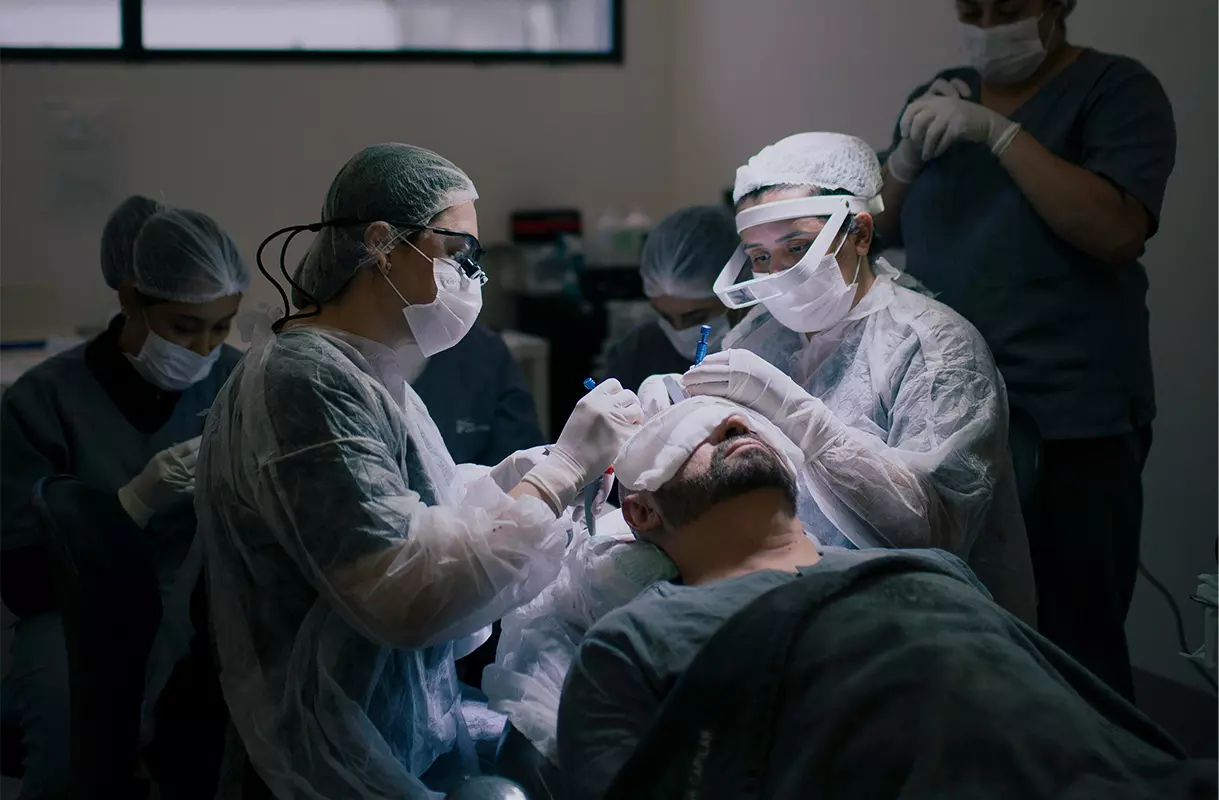I wanted to share the account of a female patient I have been treating for almost two years. Her health background comprises traits other women may have in common, and her areas of concern are shared among many. Additionally, before seeing me, the hair restoration treatments she attempted for her areas of concern are popular-priced alternatives used (successfully or not) at home.
Her story is also unique for a few reasons. It shows how:
- Different treatments can boost hair growth
- Treatments may run their course over time
- Science continues to evolve bringing about new treatments
Background
I first saw this patient (in her mid 40's) in July of 2019. Her concerns then were a 2-year history of thinning along her part and in her crown. She was using Rogaine for seven months as well as Nioxin Shampoo and Conditioner. Her general health was excellent, with normal thyroid studies, no autoimmune issues, normal hormone levels, and normal Hemoglobin.
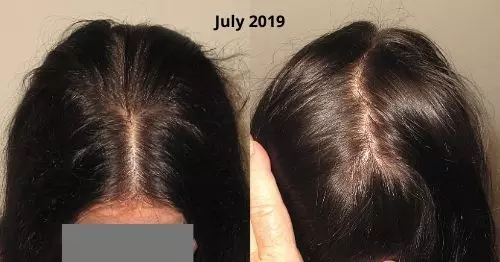
She was experiencing androgenic alopecia. We discussed all of her options, and she elected to proceed with our Hair Follicle Regeneration PLUS treatment (cytokine-rich plasma and human follicular stem cells) treatment in August of 2019. Unlike our Hair Follicle Regeneration treatment (plasma rich with platelets), which I usually do in a series, this treatment is a one-time treatment.
Hair Check
I did a baseline Hair Check measurement prior to the Hair Follicle Regeneration PLUS treatment.
Hair Check is a patented battery-operated device that I use, after gathering hair in a particular spot on the scalp, that produces a specific number which is the density "measurement" baseline. Because of how the device is made, I can go back to that exact same spot on the scalp at any point in the future and create a new number or measurement.

By making these measurements over time, I can assess if a treatment is working by just analyzing the change (if any) in numbers. If the number is higher than the last time, this means the hair is more dense. It provides quantitative evidence on the effectiveness of treatments to make the best choices for each patient.
Her baseline measurement at the time of treatment in August 2019 was 96.
She returned in March of 2020 for a follow-up. At that time, her Hair Check measurement had improved to 130 - an excellent response! However, by July of 2020, she felt like her hair had lost some density, and she returned for a measurement. Her Hair Check in July 2020 had regressed to 119. This told me that the treatment had started to run its course, and we needed to discuss our next steps.
At the end of May 2020, I had just begun using a brand new treatment called exosomes and discussed this option with her. She was eager to try it, and so in July 2020 I did an exosome treatment with 5cc undiluted concentrating in her areas of concern: her front hairline, down her central part and in her crown. I followed this with microneedling. This is also a one-time treatment.
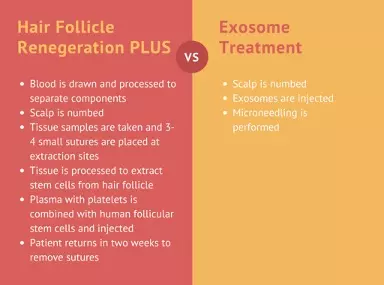
If you are following the timeline, when this patient came in July of 2019, exosomes did not exist as a treatment option in my practice. Now, one year later, with scientific advancements, she has another option. If I had not been using exosomes, I probably would have repeated the HFR PLUS.
She returned in October 2020, and her Hair Check went up to 135. So we had a very good response in just 3 months. By the time she came back in March 2021, her Hair Check had improved to 149!
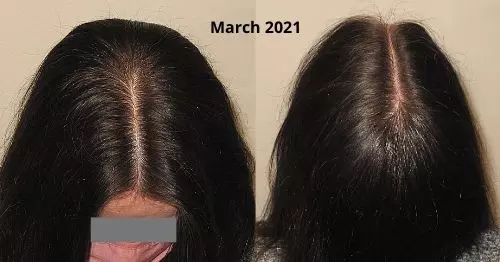
The patient is thrilled, and this story will continue as time passes. Thus far, over her treatment course, her density measurement has gone from 96 to 149 (a 55% improvement!!), which is evident in recent pictures taken. Her hair is thick and full of body (I even had trouble gathering hair to take the Hair Check measurement).
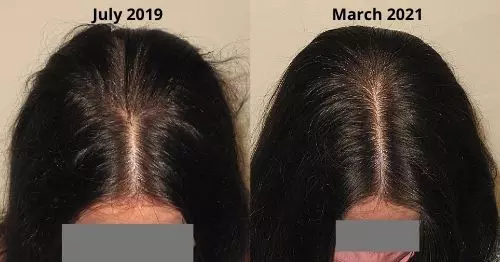
The exosome treatment is still very new, but we believe there should be a 3-4 year benefit after one treatment. For most of my patients receiving exosomes, we see improvement at three months, just as she had, which is also very exciting since most of our traditional treatments take up to 6 months to begin seeing benefit.
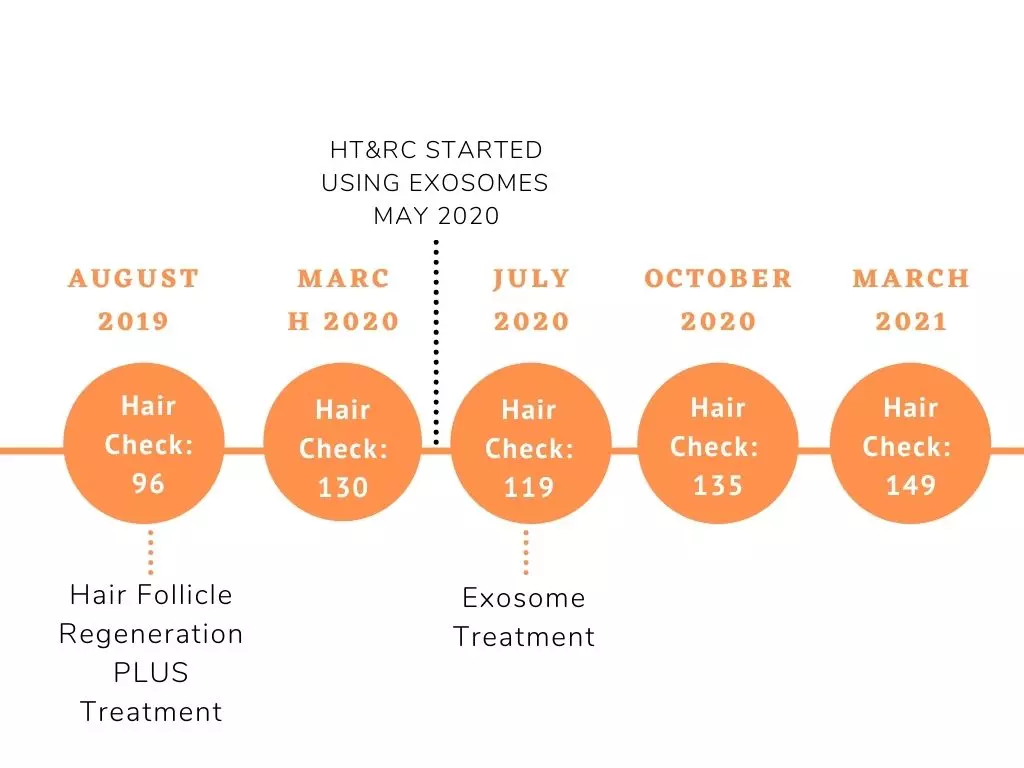
I wanted to briefly share her story to show how the game plan can change over time due to different circumstances. There is no one size fits all protocol for anyone. And if the patient commits to staying on top of any changes, we can intervene before more density is lost. Lastly, who knows the next advancement science will bring? I’m happy to meet with you and provide recommendations on next steps to achieve your desired density.
Dr. Gray


